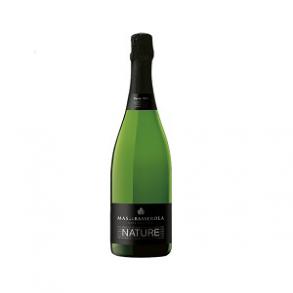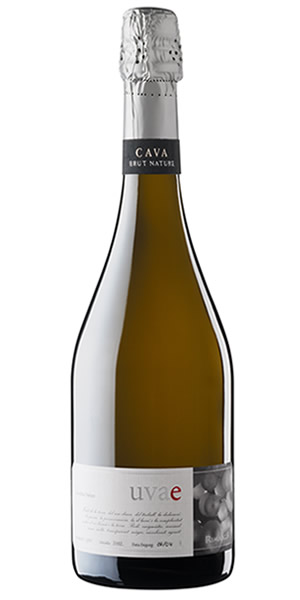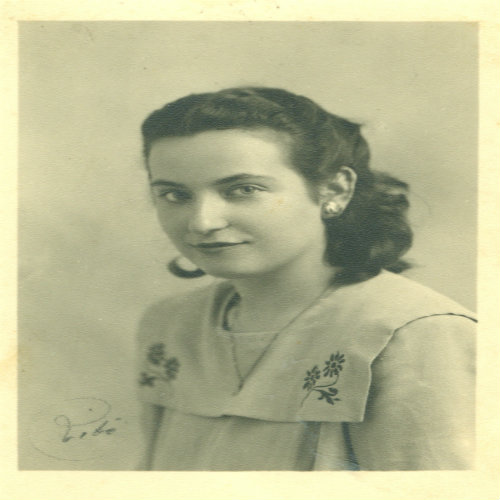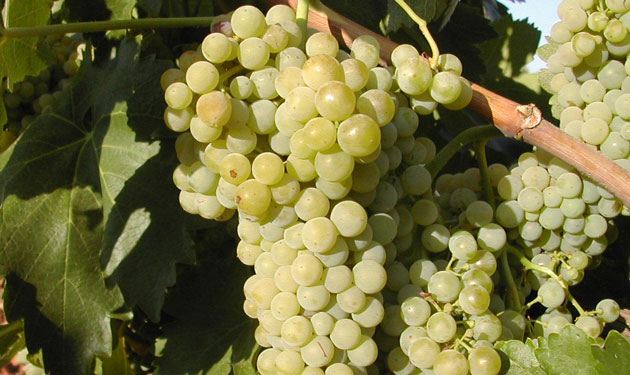397 – 411/365 – Catalonia – 15 Selected Great Cavas
Apostrophe………,
…. just lean back and chill, can’t go wrong with Zappa and Cava! The year only has another 2 days to go, so it might be time to get some Cava to celebrate what has been and what is coming. I wish you all a fine ending to the old year and a great 2015! With todays entry I have selected some of my favorite Cavas, as I did with the whites the other day and this time again, in no particular order! Enjoy!
 Bertha Siglo XXI Gran Reserva, Macabeo, Parellada, Xarel·lo and 10% Chardonnay
Bertha Siglo XXI Gran Reserva, Macabeo, Parellada, Xarel·lo and 10% Chardonnay
Minimum maturation sur lies, 36 months, which produces a great aromatic complexity. Bright yellow color with fine and steady bubbles. Intensive and extensive aromatic range, white fruit and flowers perfectly conjugated with lees aging: confectionery, brioche, smoked, dried fruits. Very elegant nose. The entrance of this Cava is fresh, creamy and elegant. The bubbles are subtle, fine and very well built, durable and with an original personality. Its aftertaste is very long and delicate. If you need a food Cava, this is the one, not that I mind enjoying it as is!

Intense Rosat Brut Nature 2009, Pinot 77%, Monastrell 23%
Intensive deep pink colour with abundant slow rising medium size bubbles. On the nose red fruits are perceived together with very refreshing balsamic sensations and a slight mineral background. The palate is dominated by red fruit nuances, it has a good balance and acidity. Candied red fruit, light floral notes and fine toasty notes provided as a background. Very fresh with integrated carbon, spicy touch at the very end. Persistent minerality. This is, like all Recaredo Cavas, is a Brut Nature but due to the fruitiness perceived as sweet. Has a great personality!
 Cava Agusti Torello Mata, Reserva Barrica 2007
Cava Agusti Torello Mata, Reserva Barrica 2007
Pale yellow with golden reflections and fine and abundant bubbles. The nose is a festival of flavors, starting with candied fruit, baked apple and floral notes that are slowly giving way to notes of aging. Pastries, yeast, vanilla, oak, candied sugar and nuts. The palate has a fresh entry with a fairly potent carbon, excellent acidity and a really long finish, with hints of parenting and a citrus and bitter twist at the end. Another piece of Iberico works well with this one!
 Mas de la Basserola – Cava Brut Nature Seleccio, Parellada/Macabeu
Mas de la Basserola – Cava Brut Nature Seleccio, Parellada/Macabeu
This is a well structured, balanced, fresh and fruity Cava. The crianza is well done which has led to a nice integration of the carbon dioxide, resulting in a soft and pleasant experience. The color is clear yellow straw with a light green hue and steady and fine bubbles. The aromas are subtle, complex and expresses a touch of yeast, brioche and white fruit. Dry, tasty and elegant notes. Good acidity, gives of a medium long finish.
 Gramona Gran Reserva Brut 1999, 70% Xarel.lo and 39% Macabeu
Gramona Gran Reserva Brut 1999, 70% Xarel.lo and 39% Macabeu
Bright yellow with a bright gold hue, clean with fine and steady bubbles. Great intensity on the nose with a predominance of pastries and bread, dried yeast, toasted brioche thin and freshly baked croissants, lactic and creamy notes with pleasant memories of baked cakes or pastry with cream or apple compote (Apffelstrudel), candied orange, almonds and toasted pine nuts, tart dried figs that give it a sweet touch, outstanding aromatic intensity that is accompanied by a marked mineral background at the very end. The palate has a huge input, a creamy grand tour with ripe fruit (candied orange, white fruit and somewhat syrupy candied fruit and some dried apricots), excellent acidity, at times reminiscent of the profile of Amontillado sherry with the ageing notes and oxidation, roasted nuts, slightly sweet, good texture and impressive structure that appeals to all the senses, majestic persistence. Long long after taste of ripe fruit and some sweetish after taste of yeast and fine pastries. A Cava that leaves you speechless! This is a true Super Catalan Cava!

Alta Alella Opus Evolutium, Organic Brut Nature Gran Reserva, Chardonnay and Pinot Noir
All Cavas made in Catalonia are presumed, more or less to contain Xarel.lo, Macabeu and Parellada. Chardonay and Pinot Noir are not mainstream, but when they are used, AA Opus Evolutium can happen! According to the regulations all of the five varieties mentioned above are allowed. Historically the indigenous grapes are the ones used mostly. Right or wrong, sticking to imported grapes can make all the difference. This Cava is kept on French oak for 4 months and a minimum of 36 months sur lies. The color is intense with greenish tones. The bubbles are plentiful, small and constant, elegant with a persistent crown. Intense color and greenish tones. Primary aromas of white fruit, pear. well balanced in the mouth and medium structure. Very tasty, aromatic and persistent.
 Brut Segura Viudas Reserva Heredad, 67% Macabeu and 33% Parellada
Brut Segura Viudas Reserva Heredad, 67% Macabeu and 33% Parellada
This premium Cava is one of the best in its class! The balance between elegance, ripe fruit and the aging being its distinctive features. The vinous, distinctive flavor, full aroma and a delicate finish put it on a level of quality Cavas which can only be referred to as Super Catalan Cava. Bright golden color with fine bubbles. Complex on the nose, aroma of lees, nuts and herbs. Powerful entry, rich in the mouth and a great acidity. Fine bitter ending. Food Cava of the best kind presented in a very special bottle.
 Anne Marie Cava Brut Nature Reserva, 40% Macabeo, 40% Xarel.lo and 20% Parellada
Anne Marie Cava Brut Nature Reserva, 40% Macabeo, 40% Xarel.lo and 20% Parellada
Straw yellow colour with green tones. Fine, slow rising bubbles, forming strings of pearls and a lovely crown of mousse. Delicate aging aromas with diary notes of fresh butter against a backdrop of ripe fruit. Pleasant and fresh during entry, opening up fully over the palate. Well-integrated carbon dioxide. The light aging aromas merge with ripe fruit and hints of toast and dried fruit and nuts. Full with good length and long-lasting flavours. Elegant, subtle Cava with great sensitivity, conveying the personality of its creator. With a well-designed, sober and distinguished presentation, this very special Cava cries out to be enjoyed. The Anne Marie comes as Brut and Semi Sec as well. I prefer my Cava dry so I tend to go for the Brut Nature.
 Torre de L’Homenatge 2003, 50% Xarel.lo, 25% Macabeu and 25% Parellada
Torre de L’Homenatge 2003, 50% Xarel.lo, 25% Macabeu and 25% Parellada
Golden color with soft bright reflections, clean, good and fine bubbles, slow rising. The nose gives off intense aromas highlighting a multitude of pastries, brioche, toast, creamy with white fruit and a slight citrus presence, nuts appear along the way. Secondary gave orange peel and slightly bitter nutty overtones. The acidity is not overwhelming, but rather well equilibrated. Creamy entry, candied sugar, toffee. Broad and vivid, long aftertaste of candied fruit with notes of nuts. This is a a true vintage Cava, only released in 1999, 2003 and 2005. 4.000 – 5.000 Bottles unleashed. The 2003 vintage was a year with hot and dry climate, with a difficult harvest, giving low volume.
 Cristina Gran Reserva Extra Brut 2006, 10% Macabeo, 35% Xarel·lo, 35 %, Parellada and 20% Chardonnay. 5% of the Xarel·lo is barrel fermented and the Cava has had a minimum period of 60 months sur lies.
Cristina Gran Reserva Extra Brut 2006, 10% Macabeo, 35% Xarel·lo, 35 %, Parellada and 20% Chardonnay. 5% of the Xarel·lo is barrel fermented and the Cava has had a minimum period of 60 months sur lies.
This brut cava was selected by the Cava Regulatory Board to be served at the Infanta Cristina’s wedding banquet. To rise to the occasion of this great honour, the Cristina Gran Reserva was created as an exceptional signature Cava. For this special edition, blends of the best vintages, most suited for the long aging periods characteristic of Mas Tinell Cavas, have been used. Intense golden color with fine bubbles. Aromatically complex, showing ripe fruit, like peach, apricot and apple. Fresh and sweet at the same time. Unctuous mouth, balanced and structured. Nice notes of toast and a final presence of aniseed. Long aftertaste, fresh and glyceric sensations.
 Castellroig Reserva Familiar Brut Nature 2005
Castellroig Reserva Familiar Brut Nature 2005
Bright golden yellow colour with very fine bubbles that form a delicate bubble chain. Great set full of aromatic complexity. Fresh fruit is perceived among its good toasted aromas, its abundant notes of spices, its intense touch of nuts and its light buttery notes of brioche on a subtle herbal background. A great Cava! Its intensity is noticed from the attack. It shows the complexity provided by its long aging with creamy notes and toasted aromas. Its elegant acidity balances the set. It has a very tasty and very long finish.Very elegant and very serious Cava.
 Titiana Pinot Noir Rosé 2012, Brut
Titiana Pinot Noir Rosé 2012, Brut
Dark salmon pink with flashes of light ruby and grenadine around the edges, clean and very elegant. The nose is pure raspberry and aromas or ripe berries such as blackberries and blueberries. The palate is round, tasty and very long. Fresh yet subtle, this wine stands well against creamy and mildly spiced food. A great alternative to everyday wines, the only thing that might bring the overall impression down, is the price. Mouthfilling, delicately but richly flavoured, and exceptionally long.
 Cava rosae, 100% Pinot Noir
Cava rosae, 100% Pinot Noir
Attractive pale and soft salmon pink color. Fine and persistent bubbles forming a dense crown. Fresh and highly complex aroma with very smoky tones, subtle nose, red fruit finish. The palate is balanced, broad, savoury, rich and elegant, its evolution shows varietal character, ending with a very long and elegant palate with great sensations. This is an elegant and dynamic Cava, which asks you to either love it or hate it. It is NOT a Cava to enjoy just as it is, because it does demand some food to go with it. I tried it with Jamon Iberico, Bellota and it worked wonders. I do believe it would work well with grilled food as well, both meats and fish, as the smoky character it possesses would be enhanced by a summer bbq! I consider this one to be a Super Catalan Cava!
 Cava Reserva Barrica Brut Nature, Macabeu, Parellada and Chardonnay
Cava Reserva Barrica Brut Nature, Macabeu, Parellada and Chardonnay
Clear and golden straw colour, with a thin and consistent rosary of bubbles, it presents itself during the tasting as a very fruitful Cava and with a fine fusion between the wine and the barrel. In the mouth it is smooth with a good structure and some notes of wood in the background, fresh and persistent, with an explosion of little bubbles that gives a nice tickling feeling. This Cava is made using a meticulous selection of base wines from Macabeu, Parellada and Chardonnay, grapes from vines with a balanced yield. After separate vinification of the three varieties, the final “coupage” is prepared and the wine is then aged in French oak barrels for around six months before the second fermentation in the bottle. The second fermentation is carried out very slowly with these Cavas, at a constant temperature of 14ºC. The ageing period is prolonged to twenty-six months.
 Recaredo Turó d‘en Mota 2002, 100% Xarel.lo
Recaredo Turó d‘en Mota 2002, 100% Xarel.lo
Straw yellow colour, very bright and clean. The bubble rise steadily forming a very thin crown. Surprising with its great intensity, expressiveness, complexity after such long ageing. Very cool, with lots of ripe fruit, especially citrus, interspersed with soft and delicate roasted nuts. Subtle mineral background. A seductive Cava. A Cava which fills the mouth with total expression, intensity, elegance. Very thin, with a long dry run, nuanced and very fresh. Carbonic perfectly integrated. Full harmony, lively, very nice. Extraordinarily long after taste.
Turo d’en Mota represents the elegance of simplicity: a single vineyard, single variety per each vintage and very limited production. It is a champagne terroir in the broadest sense, ie, with the expression of limestone, Mediterranean microclimate and Xarel·lo from vineyards planted as a single farm in 1940. The first fermentation in oak barrels and the it gets to rests in the bottle for more than 100 months. Very limited production, not exceeding 3,000 bottles. Recommend opening few minutes before serving and please, please, please…….., don’t serve it to cold, around 12 to 14 degrees Celsius should do the trick . Only for special occasions! One of the great ones and certainly to be considered to celebrate New Years Eve with a very special someone!
2 to go!
Catalan Wine 365 and SweetEasy Wine Tours










































































